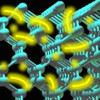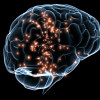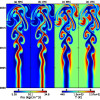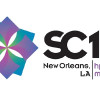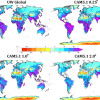News
Laser, Supercomputer Measure Speedy Electrons in Silicon
An international team of physicists and chemists at the University of California, Berkeley, has for the first time taken snapshots of electrons moving through Silicon using attosecond pulses of soft x-ray light lasting only a few billionths of a billionth of a second. They used NERSC supercomputers to help them understand what they were seeing. Read More »
A Standard for Neuroscience Data
BrainFormat, a neuroscience data standardization framework developed at Berkeley Lab, is a strong contender to contribute to a data format and storage standard for the neuroscience research community. Read More »
Encouraging Girls of Color to Code
As a volunteer instructor with Black Girls Code, scientist Daniela Ushizima of Berkeley Lab’s Computational Research Division (CRD) helped give girls of color some practical, hands-on experience with coding during the "Build a Web Page in a Day" in Oakland on Nov. 8, and at the “Robot Expo” at UC Berkeley’s Bechtel Hall on Dec. 13. Read More »
Simulations Essential to Record-setting Accelerator Design
Using one of the most powerful lasers in the world, researchers have accelerated subatomic particles to the highest energies ever recorded from a compact accelerator. The team, from the U.S. Department of Energy’s Lawrence Berkeley National Lab (Berkeley Lab), used a specialized petawatt laser and charged-particle plasma to get the particles up to speed. The setup is known as a laser-plasma accelerator, an emerging class of particle accelerators that physicists believe can shrink traditional,… Read More »
New Journal Serves as an Interface of Statistics, Atmospheric and Ocean Sciences
A new journal—Advances in Statistical Climatology, Meteorology and Oceanography—gives statisticians and researchers specializing in the atmospheric and ocean sciences an outlet to publish the details of their statistical and mathematical developments, which will effectively lead to improved models and methods for these fields. Read More »
Berkeley Lab Researchers Give Combustion System Design a Boost
Turbulent combustion simulations, which provide input to the design of more fuel-efficient combustion systems such as diesel engines, have gotten their own efficiency boost, thanks to researchers from Berkeley Lab's Computational Research Division. Read More »
Berkeley Algorithms Help Researchers Understand Dark Energy
The process of identifying and tracking Type Ia supernovae requires scientists to scrupulously monitor the night sky for slight changes, a task that would be extremely tedious and time-consuming for the Dark Energy Survey (DES) without some novel computational tools developed at NERSC by researchers at Berkeley Lab and UC Berkeley. Read More »
NERSC Wins HPCWire's Editors' Choice Award
NERSC was awarded HPCWire’s 2014 Editors’ Choice Award for Best HPC Collaboration Between Government & Industry for its partnership with Intel and Cray in preparation for Cori, the Cray XC supercomputer slated to be deployed at NERSC in 2016. Read More »
Supercomputers Fuel Global High-Resolution Climate Models
Not long ago, it would have taken several years to run a high-resolution simulation on a global climate model. But using supercomputing resources at NERSC, climate scientist Michael Wehner of Berkeley Lab's Computational Research Division was able to complete a run in just three months. Read More »
How Atomic Vibrations Transform Vanadium Dioxide
A team led by Oak Ridge National Laboratory has made an important advancement in understanding vanadium dioxide--a classic transition-metal oxide--by quantifying the thermodynamic forces driving the transformation. Read More »







 Instagram
Instagram YouTube
YouTube